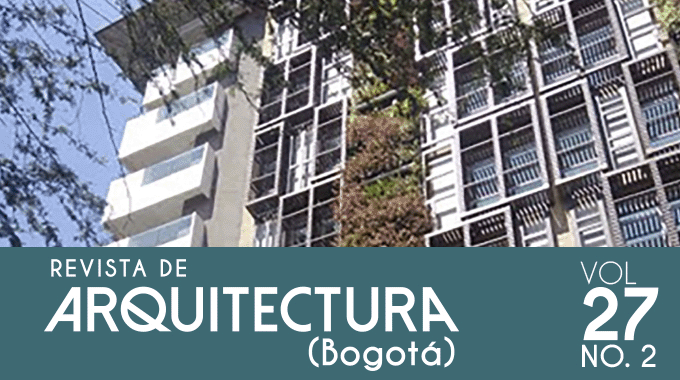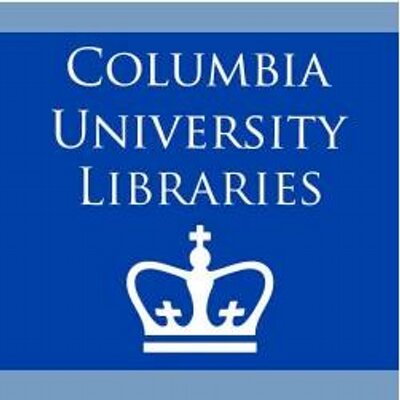

This work is licensed under a Creative Commons Attribution-NonCommercial 4.0 International License.
Revista de Arquitectura is an open access journal. More information...
Authors retain copyright and grant to the Revista de Arquitectura the right of first publication, which will be simultaneously subject to the Creative Commons (CC) BY-NC license.
Authors will sign a non-exclusive distribution license for the published version of the article by completing (RevArq FP03 Permission to Reproduce).
Self-archiving will comply with SHERPA/RoMEO guidelines and the Green classification.
To see in detail these guidelines, please consult...
Abstract
This article addresses the environmental impact of building materials resulting from construction and demolition waste and debris. It presents the potential of material resurrection through recycling and reuse, which enable the production of optimally performing and affordable building supplies. In addition to the production of materials with a lower CO2 footprint, such practices allow for the integral management of sustainable construction processes that optimize resources and minimize the waste of energy, water and material inputs such as prefabricated structures or concrete. The study aims to apply research results to present the concept of sustainable construction and architecture as "getting dressed of place", i.e. recognizing contextual variables to determine the aesthetic and technical guidelines that must be considered for the materialization of a project. It also shows how contextualized design of buildings can promote comfort and efficiency through bioclimatic strategies, as well as how the people involved in building activities must have decent working conditions, which includes everything from formal hiring to the provision of protection and industrial safety elements, an often neglected precaution in Latin American countries. Finally, relevant reflections are considered throughout the article, including the thoughtful use of water, the promotion of rainwater harvesting systems in buildings, and the understanding of sustainable construction activities as holistic issues, which recognize the integrality of the trade.

References
Acosta, D. (2009). Arquitectura y construcción sostenibles: conceptos, problemas y estrategias. Dearq, 1(4), 14-23. https://doi.org/10.18389/dearq4.2009.02
Aguilar Méndez, C. E. & Córdova Canela, F. (2024). Vivienda y su contexto: Desarrollo de dispositivos modulares para cosecha de agua de lluvia. Vivienda Y Comunidades Sustentables, (15), 41–62. https://doi.org/10.32870/rvcs.v0i15.280
Aguiló, M. (2013). Qué significa construir: Bases conceptuales de la ingeniería civil. Abada Editores.
Arango Díaz, L., Sánchez Jaramillo, J. & Tejada Urrego, E. (2019). Ensayo de método para el diseño de dispositivos de sombra en espacios públicos del trópico: Caso Medellín. Revistarquis, 9(1),112–128. https://doi.org/10.15517/ra.v9i1.40230
Área Metropolitana del Valle de Aburrá (AMVA). (2017). Programa de gestión de residuos de construcción y demolición. https://www.metropol.gov.co/ambiental/residuos-solidos/plangestionintegral/04_Programas_Proyectos/04_Programa%20de%20RCD_04-11.pdf
Bedoya, C. (2011). Viviendas de Interés Social y Prioritario Sostenibles en Colombia −VISS y VIPS−. Revista Internacional de Sostenibilidad, Tecnología y Humanismo, 6, 27-36. https://upcommons.upc.edu/handle/2099/11911?show=full
Bedoya, C. (2015). Del residuo al material. Minería a la inversa. Diké – Cátedra UNESCO de Sostenibilidad.
Bedoya, C. & Dzul, L. (2015). Concrete with recycled aggregates as urban sustainability project. Revista Ingeniería De Construcción, 30(2), 99–108. https://doi.org/10.4067/S0718-50732015000200002
Borbón, A. C., Cabanillas, R. E. & Pérez, J. B. (2010). Modelación y Simulación de la Transferencia de Calor en Muros de Bloque de Concreto Hueco. Información tecnológica, 21(3), 27-38. https://doi.org/10.4067/S0718-07642010000300004
Cano Restrepo, E. (2016). Agua lluvia para uso no potable en edificios de vivienda en altura: “incidencias legales, ambientales, técnicas y económicas Naranjal, Medellín, Colombia” [Master’s dissertation, Universidad Nacional de Colombia]. https://repositorio.unal.edu.co/handle/unal/58091
Fernández, Rosa. (2023). Evolución de la población mundial desde 1950 hasta 2100. Statista. https://es.statista.com/estadisticas/635122/evolucion-de-la-poblacion-mundial/
Girardet, Herbert. (2001). Creando ciudades sostenibles. Tilde.
Monsalve Valderrama, S. y Orozco Restrepo, J. D. (2022). Estudio de factibilidad de una empresa para la construcción y comercialización de sistemas de captación de agua lluvia en Medellín [Undergraduate degree’s dissertation, Universidad de Antioquia]. https://bibliotecadigital.udea.edu.co/bitstream/10495/33243/1/MonsalveSarah_2022_FactibilidadEmpresaAgua.pdf
Mustika, N. W. M., Putra, I. D. G. D., Dwijendra, N. K. A. & Adhika, I. M. (2025). Green Building Certification Determining Factors in Bali, Indonesia for Contextual Sustainability. Civil Engineering and Architecture, 13(1), 1-20. https://doi.org/10.13189/cea.2025.130101
Pedroza Pallares, Y. E. & Arenas Páez, Y. X. (2019). Análisis de la huella de carbono y alternativas de mitigación en el uso de los materiales más utilizados en la construcción [Undergraduate degree’s dissertation, Universidad Francisco de Paula Santander]. https://repositorioinstitucional.ufpso.edu.co/handle/20.500.14167/596
Peña Rodríguez, M. L. (2008). El Programa CINVA y la acción comunal. Bitácora Urbano Territorial, 12(1), 185–192. https://revistas.unal.edu.co/index.php/bitacora/article/view/18621
Rahim, M., Munir, A., Marasabessy, F., & Darmawijaya, D. (2023). Local wisdom and sustainable features of tidore vernacular architecture. Civil Engineering and Architecture, 11(2), 531–549. https://doi.org/10.13189/cea.2023.110201
Sacht, H. M., Bragança, L. & Almeida, M. (2013). Fachadas con muro Trombe y doble acristalamiento: E! ciencia energética para diferentes climas Portugueses. Informes De La Construcción, 65(Extra-1), 11–22. https://doi.org/10.3989/ic.11.152
Sakai, K. & T. Naguchi. (2012). The sustainable use of concrete. CRC Press.
Sánchez R., J. L. & Albo Cos, Ú. (2021). Hundertwasser: Las cinco pieles como interfaces de experiencia común. Índex, revista de arte contemporáneo, (12), 64-75. https://doi.org/10.26807/cav.vi12.448
Soto-Estrada, E., Álvarez-Carrascal, M. F., Gómez-Lizarazo, J. & Valencia-Montoya, D. (2016). Thermal Comfort in Residential Housing in Medellin. Revista Ingenierías Universidad De Medellín, 18(35), 51–68. https://doi.org/10.22395/rium.v18n35a4
Stagno, B. (2006). Ciudades tropicales sostenibles. Instituto de Arquitectura Tropical.
Vásquez, A., Botero, L. y Carvajal, D. (2015). Fabricación de bloques de tierra comprimida con adición de residuos de construcción y demolición como reemplazo del agregado pétreo convencional. Ingeniería y Ciencia, 11(21), 197-220. https://doi.org/10.17230/ingciencia.11.21.10
































